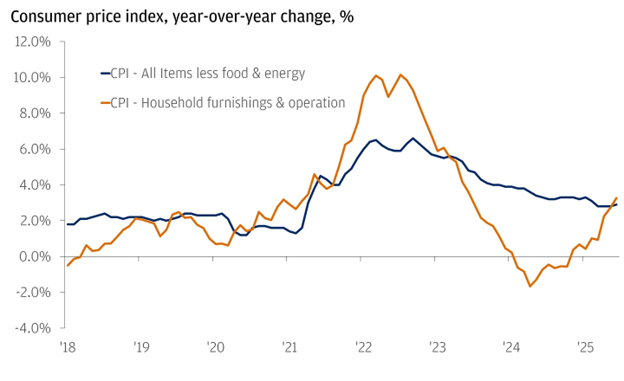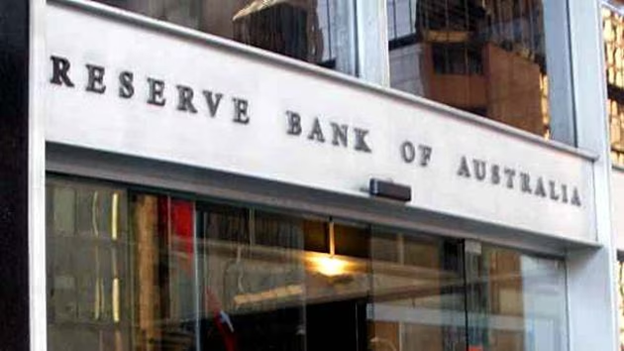Australia’s inflation rate in July 2025 has presented an uncomfortable economic challenge. The unexpected picking up of consumer prices defied a recent trend of easing off. This new point of data has added to the difficulty for the Reserve Bank of Australia in deciding on monetary policy. It has also altered the prediction for world capital invested in ASX 200 blue-chip stocks.
The Reserve Bank of Australia has a tough balancing act to undertake. Its recent moves were aimed at reviving an underperforming economy. But the July inflation figures suggest that easing policy may be premature. This tension between containing consumer demand pressure and supporting growth is at the centre of the issue. It hurts domestic businesses and foreign investors.
Inflation Hits New Record High

Consumer Price Index jumped sharply in July, defying forecasts and unsettling markets
Australia inflation 2025 has been centre stage with financial markets. The Australian Bureau of Statistics (ABS) reported a 2.8% year-on-year lift in the consumer price index (CPI) in July. The reading was considerably higher than June’s 1.9%. It beat forecasts by the market. Core measures of inflation also posted a sharp increase. The trimmed mean inflation measure lifted to 2.7%. Underlying inflation, stripping out volatile items, reached 3.2%. This is above the Reserve Bank of Australia’s target.
The statistics confirm that inflation pressures remain. Among the causes was a 13% increase in the price of electricity. This was following the short-term government rebates had run out. Prices of houses also increased by nearly 4% increase in rent. Services of travel and tourism saw 5% increase in prices. This was on the heels of strong consumer demand. The inflation rates clearly show cost increases across the board.
The Reserve Bank of Australia’s Policy Tightrope

The Reserve Bank of Australia faces a tough balancing act between inflation and growth
The Reserve Bank of Australia cut interest rates three times this year. They were meant to stimulate economic growth. However, the recent inflation surprise changed the market sentiment. Markets now expect the RBA to no longer cut rates in September. This is just a temporary pause in the easing cycle. The central bank minutes expressed concern about unemployment. It has been rising towards 4.3%. This is a close to four-year high.
The Reserve Bank of Australia must generate two conflicting goals. It must curb inflation while not triggering yet another economic slowdown. The path forward is unclear. Stop-go policy-making fuels market uncertainty. Overseas investors are watching keenly for the RBA to make its next move. Policy divergence with other central banks will impact capital flows.
ASX 200 Blue-Chip Stocks and Sector Performance

Blue-chip companies are responding differently to inflationary pressures across sectors
The ASX 200 index passed 9,000 points last month. It is fueled by expectations of earnings and rate reductions. However, inflation can spoil these valuations. The energy cost’s effect is a new wild card. It affects corporate margins and budgets.
Different sectors within the ASX 200 respond to inflation in different ways. Banks like CBA and Westpac could see higher lending margins. But higher mortgage arrears would be a problem. Retailers Woolworths and Coles have a mixed experience. Food sales are healthy. But discretionary spending will decline. Their raw materials costs are rising as well. That is due to wage increases and power prices.
The Energy Cost Impact on Business and Consumers

A 13% electricity price surge in July became the largest single contributor to inflation
Electricity rates are inflationary and politically sensitive. A 13% rise in July was the largest contributor to CPI numbers. This increase happened after government rebates expired. This puts pressure on the household and commercial segments. For business, higher energy costs squeeze profit margins. Manufacturers and retailers are most vulnerable. For consumers, higher utility bills reduce disposable income. This resulted in softer consumer demand pressure.
The government is aware of this issue. They have new rebates in August. These new measures can lower future readings of CPI. They do not, however, tackle the longer-term energy problem. The supply-side shocks show just how tricky monetary policy can be. The Reserve Bank of Australia must look beyond core measures of inflation. It must consider these external factors.
Forex Movements and Overseas Investor Exposure

AUD volatility is reshaping overseas investor returns and hedging strategies
The Australian dollar (AUD) reacted to inflation news. It rose initially against the U.S. dollar. Then it fell back. A high AUD is bad news for exporters. They are miners and agricultural firms. A high AUD lowers the price of imports. One of the largest risks facing global investors is forex volatility. Hedging of currencies becomes inevitable.
Offshore pools of money typically invest in Australia for diversification reasons. They track commodity cycles and interest rate differentials. The policy stance of Australia is different from the Federal Reserve of the U.S. and the European Central Bank. These variations either attract or deter foreign capital. For example, if the RBA softens while the Fed is still hard, the interest rate differential continues. This can encourage foreign inflows into Australian assets.
Global Comparison and Economic Forecasts

Australia’s inflation and policy divergence stand in contrast to the U.S. and Europe.
Photo Credit: Dreamstime
The U.S. Federal Reserve has stuck at its rate of 4.75%. Inflation there is moderating. The European Central Bank has suspended its cuts, too. This is due to European energy inflation. Australia’s position is different. Its economy is not as rapidly growing as that of the United States. But it has more deeply rooted inflation than some European nations. That makes the Reserve Bank of Australia’s job more challenging. It cannot drop rates as freely as it would want to.
The Reserve Bank of Australia has released its economic forecasts for 2025. It foresees inflation climbing to a high of 3.1% in mid-2026. GDP growth will decelerate to 1.7% in 2025. Unemployment is projected to rise steadily to 4.5%. These forecasts point to a challenging economic terrain. The central bank’s policy is a delicate balance. It wishes to stimulate growth. It cannot ignite inflation again.
Investment Strategies for Global Capital
Global investors are now rebalancing their portfolios. They are looking for areas that are inflation-resistant. Energy and resource stocks remain popular. They serve as a hedge against inflation. Financials must be monitored closely. Loan quality may suffer if pressure on consumer demand persists. Defensive sectors like health and utilities are also popular. They produce stability amidst economic fluctuations.
Growth and technology stocks are sensitive to rates. They are detrimentally impacted by rising interest rates. They are less attractive to investors. For international investor-exposed funds, Australia remains an integral part of Asia-Pacific mandates. Intelligent hedging against currency fluctuations must be done. There must be a selective stock-picking approach as well.
Market Outlook and Investor Guidance
The consensus in the market is now one of caution. Investors are trying to see what the Reserve Bank of Australia will do next. The November RBA meeting is now the focus. Economists are split over the size and timing of the next rate cut. The inflation surprise has added uncertainty.
Investors must concentrate on the fundamentals of a company. Blue-chip stocks with healthy balance sheets should be sought. These firms can absorb greater costs. They can also transfer cost escalations to customers. Portfolios containing a blend of cyclical and defensive stocks could perform the best. This approach can hedge against inflation risks. It can also gain from global growth opportunities.
Adapting to the Current Economic Environment
The July inflation figures have reshaped Australia’s economic landscape. They’ve also altered investment agendas. The Reserve Bank of Australia must now take a different direction. It must steer the economy through high inflation. It must also maintain growth. ASX 200 firms must adapt to higher costs. They must also contend with pressure on consumer demand. This is now the new normal for the Australian economy.
Offshore investment in Australia requires sophistication. Currency risk must be considered by investors. They must study the health of different industries as well. Australia is an important market for foreign money. Passive investing might not be enough, however. Active management and deep research are required. This will help investors deal with the shifting scenario.
The Role of Commodity Prices
Commodity prices have been a big pillar of support for the Australian economy. Good global demand for LNG and iron ore has come in handy. This supports the resources sector. Forex movements, however, can weaken export competitiveness. A rising AUD can make Australian goods costly. This impacts mining houses such as BHP and Rio Tinto.
For global investors, commodity prices have a double-edged nature. They provide inflation protection. But they also expose portfolios to currency risk. The Australian dollar usually moves in tandem with commodity prices. This correlation tends to create volatility. Investors will have to decide whether the commodity price benefits outweigh currency risk.
Consumer Demand Pressure and Household Finances

Strong consumer demand continues to push prices higher, despite pressure on household budgets
Consumer demand pressure is a key motivator for the RBA. The central bank wants to relieve pressure. It has used cuts in interest rates to ease the burden on consumers. Increases, however, in utility bills and other costs soften this impact. Consumers are feeling squeezed on their disposable income. This affects discretionary spending. Retailers like Wesfarmers are keenly observing.
The RBA is also keeping an eye on the housing market. Rising mortgage stress is a problem. The falling rates haven’t solved the affordability crisis. That’s part of the policy conundrum, too. The central bank must do two things. It must stabilize households. It must also stabilize price growth.
The Future of Monetary Policy in Australia
The RBA’s future is uncertain. The inflation numbers do suggest a halt, though. Then what? Some believe there may be a cut later this year. They cite falling GDP growth. Others believe persistent inflation will restrain the RBA from cutting rates. That restraint on rate settings is one of the biggest challenges confronting investors. They have to be ready for any number of things.
The RBA’s forward guidance is now less precise than it used to be. The central bank signaled flexibility. This means that its decisions will depend on the data. Investors must remain very close to each new data release. Such releases include monthly CPI, labor market indicators, and business surveys. The RBA’s subsequent board minutes will provide further clues.
The ASX 200 Rally Under Scrutiny
The ASX 200’s climb above 9,000 points is a great story. But now some analysts are becoming wary of valuations. They fear the consumer and banking sectors. Should inflation remain elevated, it could knock into profits at companies. Higher borrowing costs may also affect business investment.
For investors, this requires a more selective approach. Not all blue-chip stocks are equal. Those with strong pricing power may excel. Those leveraged or those that have squeezed margins may struggle. This is an active portfolio management moment. It is not the moment for general market bets.
Diversification for Global Investors
Global investors are able to use Australia for portfolio diversification. ASX 200 is highly weighted in financials and resources. This differentiates it from other markets. For example, the U.S. market is technology-focused. Such a combination can reduce aggregate portfolio risk.
But diversification does not eliminate all risk. Australia’s economy is exposed to the prices of world commodities. It is also linked to China trade. Investors worldwide have to understand these linkages. They have to hedge currency risk, too. The Australian currency is highly volatile. It can move with commodity prices and interest rate news.
The Outlook for Australian Banks

Inflation and mortgage stress are weighing on the housing sector and bank loan books
Australian banks are at the center of the ASX 200. Higher rates can lift their lending margins. This can help improve their profits. There are dangers, though. Higher rates can make bad loans rise. This is referred to as mortgage arrears. If houses become more costly for families, some may struggle to make mortgage payments. This can harm bank profits.
International investors in Australian banks need to watch two things. They need to watch the net interest margin. They need to watch loan quality data, too. Banks with a diversified and strong loan book could be in a better position. Those who are very exposed to the housing market could be riskier.
The Impact on Consumer Discretionary Stocks
Consumer discretionary stocks are susceptible to family spending. These companies are involved with discretionary services and products. A consolidation of families’ budgets can lead to reduced demand. That is why rising power prices are a cause for concern. When families spend more on electricity, they spend less on everything else. This will hurt retailers like Wesfarmers.
But other consumer shares are more robust. Woolworths and Coles have grocery stores. These are everyday items. Their sales will normally hold up in slack economic times. But they are still vulnerable to increasing input prices. Wage increases and power charges can chip away at their margins. This makes for a complex set of circumstances for shareholders.
Key FAQs
- What is driving Australia’s inflation in 2025?
Australian inflation in 2025 is being driven by a mix of energy prices, housing pressures, and ongoing consumer demand. The elimination of the rebates on electricity in July raised power prices dramatically, and rents and housing prices continue to increase. Demand for travel and hospitality was also putting pressure on prices. These cyclical and structural conditions, combined with supply chain prices, are keeping inflation above the Reserve Bank of Australia‘s 2–3% range.
- What action is the Reserve Bank of Australia taking regarding inflation?
The Reserve Bank of Australia (RBA) cut interest rates three times in 2025 to spur growth, with the cash rate currently at 3.60%. But after the July shock to inflation, the RBA is issuing a warning. Policymakers have tied future rate actions to job market conditions, with both employment and price risks. That is, the RBA is tight-rope walking between spurring growth and not allowing inflation expectations to run wild.
- Will the RBA make a September 2025 rate cut?
Markets now regard a September cut as unlikely. The better-than-expected CPI in July reduced the likelihood of easing further in the short term. The next cut could come in November, however, if labour market conditions soften, the analysts say. The RBA would like to see inflation well on the path down before applying additional stimulus.
- Which ASX 200 blue-chip stocks are most sensitive to inflation?
Retailers like Woolworths, Coles, and Wesfarmers are experiencing shrinking consumer spending. Banks like CBA, Westpac, and NAB have growing interest margins but rising loan defaults. Utilities like AGL have revenues rising with price indexing, but costs as well. BHP and Rio Tinto, the mining giants, are less exposed at home but impacted by forex swings and offshore commodity demand.
- How do electricity prices drive inflation in Australia?
Electricity prices have been a prime inflation driver in 2025. The July expiry of government rebates caused a 13% increase in power bills, which directly pushed up the CPI. More expensive energy not only affects households but also increases business costs through retail, manufacturing, and services, fueling inflationary pressures.
- What is the Australian inflation forecast for 2026?
The RBA projects inflation to moderate to around 3.1% in mid-2026 before returning close to the 2–3% target. That moderation is contingent on energy subsidies, slowing rental growth, and tightening wage gains. Global energy volatility or supply shocks could delay this process.
- How are Coles and Woolworths affected by inflation?
For shoppers like Woolworths and Coles, inflation constricts margins as well as demand. Increased energy and labor prices increase operating costs, while households slash discretionary expenditure. But the businesses also receive a boost from consumers switching from dining out at restaurants to eating at home, which can contribute to helping to offset the squeeze in part.
- Are Australian banks benefiting from increased interest rates?
Yes and no. Higher rates boost banks like CBA, NAB, and Westpac’s net interest margins. Inflation and restricted budgets, however, enhance the likelihood of loan defaults and mortgage distress. If the jobless rate rises, credit quality would deteriorate, offsetting interest income benefits.
- What does Australian inflation mean for the housing market?
Inflation raises the price of building and borrowing. Although lower interest rates at the beginning of 2025 boosted new home demand, persistently high inflation could slow approvals and affordability. Rent inflation remains firm, in line with undersupply in the housing market.
- What is the international investor response to Australia’s inflation peak?
Investors worldwide are cautious but not leaving. A number of them view Australian blue-chip shares as long-term wagers on solid resources and a controlled utilities market. Inflation does bring volatility to earnings and foreign exchange returns, though. Some funds are waiting for inflation to show signs of stabilizing before making new commitments.
- How is the Australian dollar placed in investor exposure?
The foreign returns are affected by the Australian dollar (AUD). The AUD makes exports uncompetitive but also increases the foreign investors’ local asset returns. Inflation and RBA policy-driven currency volatility are primary considerations for hedging Australian exposure.
- What ASX 200 sectors perform best in high inflation?
Resources, utilities, and infrastructure generally do well in inflationary environments. These businesses have either inflation-linked revenues or pricing power. Defensive industries such as healthcare are also supportive, while retail and discretionary consumer stocks tend to lag.
- In what ways is the RBA different from the U.S. Federal Reserve?
While both are concerned with inflation and employment, the RBA is concerned more with wages and housing due to the household debt structure of Australia. The Federal Reserve of the United States, being a larger economy, also influences international capital flows more significantly. The RBA is also less inclined to move rates because Australia is vulnerable to mortgage rates.
- Will Australia enter a recession in 2025?
Recession is not imminent, but risk is rising. Growth is slowing, with GDP forecasts reduced to 1.7% in 2025. If inflation remains stubborn and the RBA is forced to maintain rates higher, unemployment can rise further, moving the economy towards contraction.
- How does energy cost influence corporate profitability?
Higher energy prices increase the operating expenses of manufacturing, retailing, and transportation businesses. While higher prices are transferred by some firms, competitive sectors like retail struggle to transfer the complete impact, thereby reducing profit margins. Utilities and energy businesses may benefit from higher prices.
- Why is consumer demand pressure still strong in 2025?
In spite of firmer prices, high household savings, wage rises, and government subsidies earlier in the year supported demand. Expenditure on holidays and leisure has been surprisingly strong, suggesting that some segments of consumers are willing to spend in spite of inflation.
- How do foreign funds hedge against AUD volatility?
They typically use currency forwards, futures, or options to hedge exposure in Australian dollars. Funds typically hedge partially to stay away from downside risk and maintain some exposure on AUD appreciation in the context of commodities.
- Is inflation in Australia transitory or structural?
Australia’s inflation in 2025 is partly structural, driven by housing shortage and energy market reforms. Travel costs are among the cyclical components. However, ongoing rental growth and high household energy spending are signals that underlying inflation is not all transient.
- What are the dangers that blue-chip shares would incur from inflation?
Key risks are falling consumer demand, rising labour costs, higher energy prices, and forex volatility. Even the large caps such as BHP, Woolworths, and CBA are vulnerable to earnings risk if inflation is higher than the target.
- Should global investors short or go long ASX stocks?
It is strategy-dependent. Defensive investors can increase exposure to utilities, healthcare, and resources. Consumer weakness worries can reduce retail exposures. Selective sector allocation and currency hedging are the keys to getting through Australia’s inflation climate in 2025.
Also Read: https://colitco.com/cse-tsxv-miners-safe-haven-supply-chains/
Summary of Key Investment Themes
Australia’s inflation in 2025 is a multifaceted tale. It impacts monetary policy, corporate performance, and investor sentiment. The Reserve Bank of Australia has a difficult decision to make. It needs to balance the battle against inflation with championing growth. It creates uncertainty for the economy.
ASX 200 blue-chip companies face numerous challenges. Their destiny is in their sector. Global investors must be selective with their strategy. They must utilize clever hedging methods. This will help them in risk handling. These risks include currency uncertainty and inflationary shocks. The world offers itself as assertive and educated investment options.












